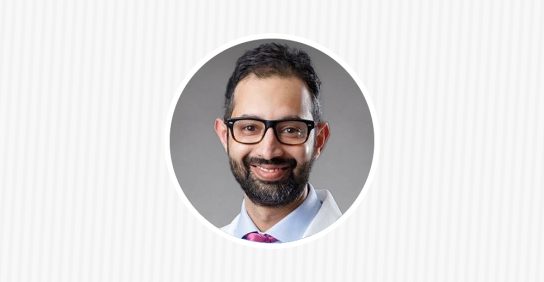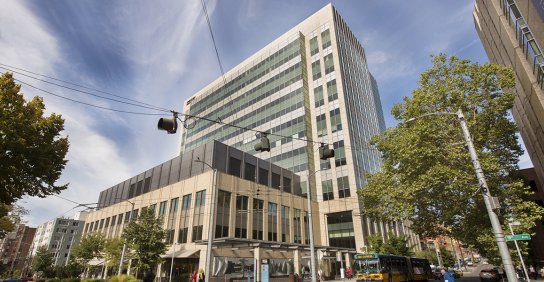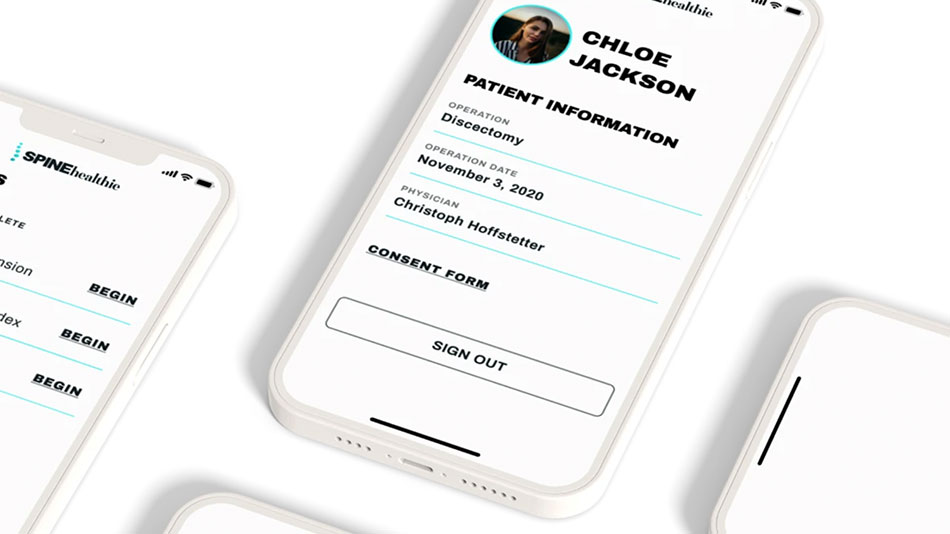Dr. Amin is an expert surgeon specializing in endoscopic spine surgery and spine oncology.
Endoscopic Spine Surgery
The least invasive, most technologically advanced spine surgery technique.
Endoscopic Spine Surgery
The least invasive, most technologically advanced spine surgery technique.

Endoscopic spine surgery at UW Medicine
UW Medicine spine surgeons are national and international leaders in endoscopic spine procedures. These techniques are the least invasive strategies available to treat spine problems caused by nerve compression.
Visit the Spine Surgery page >>
Why choose UW Medicine
With spine surgery, experience matters. UW Medicine is one of the first programs in the United States to address problems in the entire spine with endoscopic procedures. With our surgeons at the forefront of this new technology, we can create the best treatment plan to meet your unique needs.
What is endoscopic spine surgery?
Endoscopic spine surgery is the most minimally invasive spine surgery (MISS) technique available. This type of surgery treats back pain caused by nerve compression, such as disc herniations, spinal stenosis and synovial cysts.
During these procedures, your surgeon makes a small incision – often as small as ¼ inch – in your back. They will thread a pen-size tube, called a dilator, gently retracting your back muscles to gain access to the bones of your back (vertebrae). They then slide a long, thin tube (an endoscope) through the dilator to get a better look at your problem area. Finally, your surgeon will use a small, high-definition camera and other small, specialized tools through the endoscope to repair your spine.
For you, that means less pain and a faster recovery. In fact, most patients can leave the hospital within two-to-three hours after surgery.
Benefits of endoscopic spine surgery
Endoscopic spine surgery techniques are often faster, typically lasting one to two hours. Recovery time is also typically shorter, so you can get back to your regular exercise and work activities sooner. These procedures, when done by an experienced surgeon like those at UW Medicine, can also provide several other benefits, including:
- Diminished damage to healthy tissues (such as muscles and ligaments)
- Less blood loss during surgery
- Maintaining spine stability and avoiding the need for more involved fusion surgeries
- Outpatient procedure, which means patients are typically discharged within two hours after surgery
- Reduced pain after surgery (lowering the need for opioid pain medication in many patients)
Spine conditions we treat with endoscopic spine surgery
Our team is trained in endoscopic techniques for the full spine, including:
- Cervical spine conditions
- Thoracic spine conditions
- Lumbar spine conditions
Endoscopic spine surgery procedures are not suitable for all patients, however. As with any surgical procedure, talk with your surgeon to determine if you are a good candidate for this technique. In general, these techniques work well for patients who:
- Have not found relief with conservative therapy
- Have specific spinal conditions that respond well to endoscopic surgery, such as disc herniation or spinal stenosis
- Have not had repeat back surgeries or multiple incisions
- Have no disqualifying health conditions
What to expect with endoscopic spine surgery
Our caring, compassionate staff will greet you on the day of your surgery. This is your opportunity to ask any remaining questions. During the procedure, here is what you can generally expect:
- An anesthesiologist will give you either general anesthesia or conscious sedation to prevent pain. General anesthesia will cause you to sleep through the surgery. Conscious sedation will make you relaxed and awake during surgery, but you won’t remember it.
- Your surgeon will make a small incision in your back to insert the dilator and create a tunnel down to your vertebrae. They then thread the endoscope through the dilator to ensure they have the best view of your spinal problem and any nerve compression.
- To access the problem spot, your surgeon may remove a small amount of spinal bone. Then they complete your spinal repair using specialized tools via the endoscope.
- Once your procedure is complete, your surgeon will remove the tools and close your incision. To finish, they will inject a long-acting numbing medication into your incision area, cover it with a bandage and take you to your recovery room.
- To aid in your recovery, you can choose to have direct access to your care team through our custom mobile app created by UW Medicine doctors and researchers.

Anubhav Amin, MD

Christoph P. Hofstetter, MD
Dr. Hofstetter is internationally regarded for his research and expertise in endoscopic procedures.

Imad Khan, MD
Dr. Khan’s specialization includes intricate spinal surgery procedures, with an emphasis on endoscopic spine surgery.

Spine Center at Harborview
Learn about this location near downtown Seattle’s First Hill neighborhood »
Fax 206.744.9937

Spine Center at UW Medical Center – Northwest
Learn about this location in Seattle’s Northgate neighborhood »
Fax 206.363.0019

